Mono Aux Send 1 Level Pot
Sourced postfade channel fader, or postfade monitor pot when “MON” sw is pressed.

Aux 1 From Monitor Switch
Moves source for aux send 1 to monitor postfade. (From channel postfade w/ sw up.)

Aux 1 In Switch
Enables aux send 1 output to bus.



























